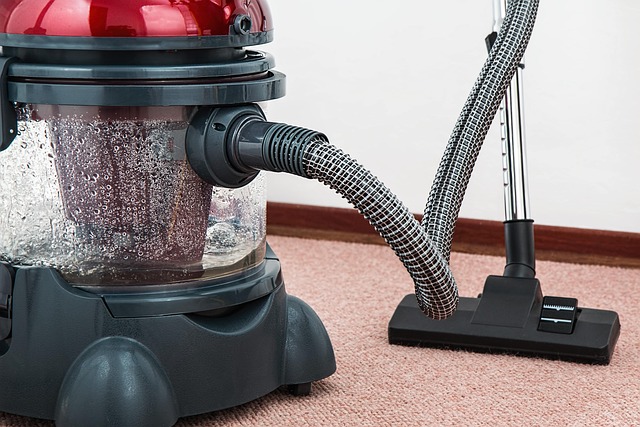Carpet beetles, household pests, cause damage through a four-stage life cycle. Discreet signs like holes and musty odors indicate infestations in sensitive areas. Traditional chemical methods are problematic; non-invasive solutions include regular cleaning and vacuuming with HEPA filters. Professional carpet beetle extermination with modern techniques is crucial for early detection, minimizing damage, and health risks, while maintaining discreet operations.
Carpet beetles are more than just a nuisance; they can be a delicate nightmare for businesses and homes with sensitive environments. Discreet carpet beetle control is essential to minimize disruption while preserving the integrity of spaces like museums, libraries, and historic sites. This article guides you through understanding these pests’ behavior, identifying subtle signs of infestation, and exploring non-invasive control measures. We also delve into professional extermination, offering insights on timing and methods for effective yet discreet carpet beetle pest control.
Understanding Carpet Beetles: Behavior and Life Cycle
Carpet beetles are a common household pest known for their ability to infest carpets, fabrics, and other textile items. Understanding their behavior and life cycle is crucial when it comes to effective carpet beetle pest control. These tiny insects go through four distinct stages: egg, larva, pupa, and adult. The female beetle lays eggs in crevices, behind furniture, or within the fabric of carpets. Once hatched, larvae emerge and begin feeding on fibers, often going unnoticed until significant damage occurs.
During their larval stage, carpet beetles can cause extensive harm to textiles. They are particularly attracted to natural fibers like wool, silk, and cotton. As they grow, larvae transform into pupae, eventually emerging as adult beetles. Adult carpet beetles are responsible for reproduction and further infestation. Implementing discreet carpet beetle control methods early on, such as regular cleaning, sealing entry points, and using targeted treatments, can help minimize disruption to your home or business while effectively managing and eradicating these persistent pests.
Identifying Signs of Infestation in Discreet Environments
In discreet environments like offices, libraries, or museums where the presence of pests can disrupt valuable collections and operations, identifying signs of a carpet beetle infestation is paramount. Look for subtle indicators such as small holes in fabrics, fibers missing from carpets, or even a peculiar musty odor. These are often the first visible signs that carpet beetles have taken residence, and early detection is crucial to minimizing damage and disruption.
Carpet beetles feed on natural fibers, so they’re drawn to materials like wool, silk, cotton, and linen. Pay close attention to items stored on carpets or in dark, undisturbed areas where beetles thrive. Regular inspections by professionals skilled in carpet beetle pest control are essential for identifying infestations early, especially in these sensitive settings.
Non-Invasive Carpet Beetle Control Measures
Carpet beetles, though tiny, can cause significant damage to your home’s flooring and textiles. Traditional carpet beetle pest control methods often involve invasive chemicals that can leave a lingering smell and pose potential health risks. For those seeking discreet solutions, there are several non-invasive measures that prove effective in managing these pests without disrupting daily life.
One such method is regular cleaning and vacuuming. Vacuuming regularly helps remove adult beetles, larvae, and eggs from carpets and upholstery. Using a vacuum with a high-efficiency particulate air (HEPA) filter ensures that no beetle parts are dispersed back into the air or left behind. Additionally, maintaining good hygiene practices like promptly treating spills and stains can reduce attractive food sources for carpet beetles, helping to deter infestations.
Professional Discreet Carpet Beetle Extermination: When and How?
Professional discreet carpet beetle extermination is a crucial step in effectively managing an infestation without causing disruption to your home or business. The best time to engage such services is during the early stages of an infestation, before it becomes widespread. This proactive approach ensures faster and more efficient control, as well as minimal damage to affected carpets and furniture.
When hiring professionals for carpet beetle pest control, opt for discreet services that employ modern techniques and targeted treatments. These methods minimize the use of harsh chemicals, reducing potential health risks and environmental impact. Professionals will inspect your premises to identify infestation sources, treat affected areas, and provide ongoing guidance on prevention and maintenance. Regular monitoring and quick response to any reoccurrences are key to keeping carpet beetles at bay.
Carpet beetles can be persistent pests, especially in discreet environments. However, with the right knowledge and measures, their presence can be discreetly managed without causing significant disruption. By understanding their behavior and life cycle, identifying subtle signs of infestation, and employing non-invasive control methods, you can effectively mitigate these tiny invaders. If professional assistance is required, timely intervention and targeted extermination strategies ensure minimal disturbance to your space. Implementing these discreet carpet beetle control measures allows for a harmonious coexistence with these pests, keeping your environment comfortable and free from unwanted critters.
